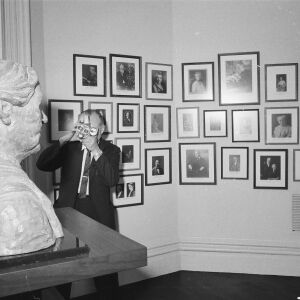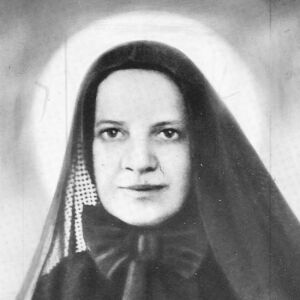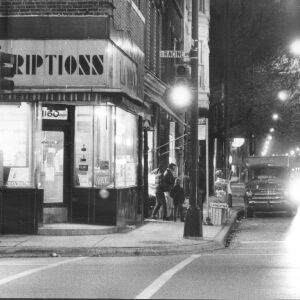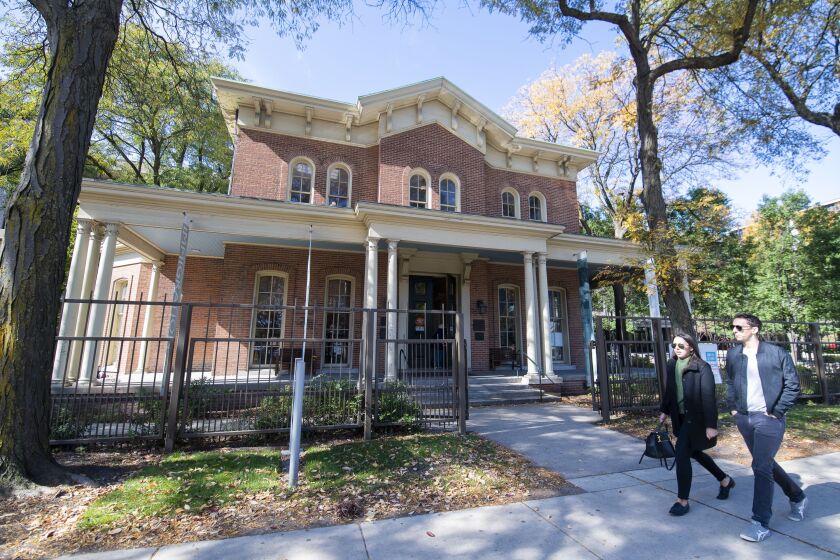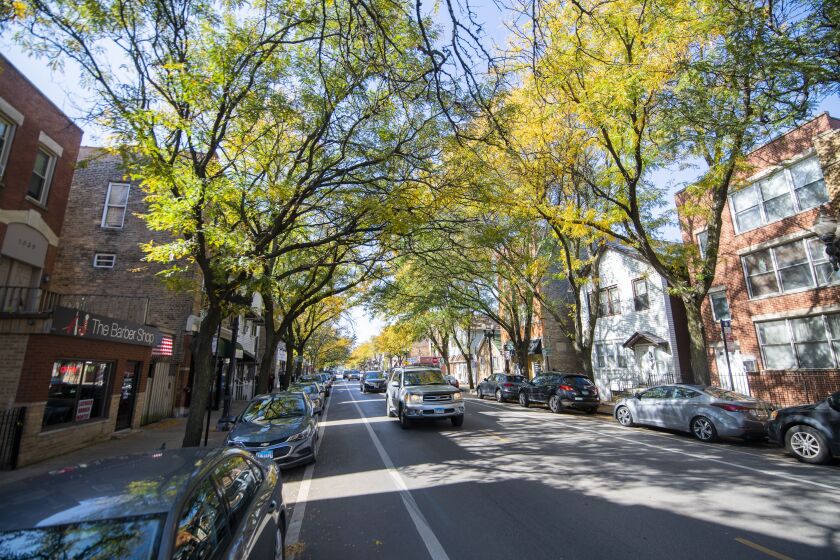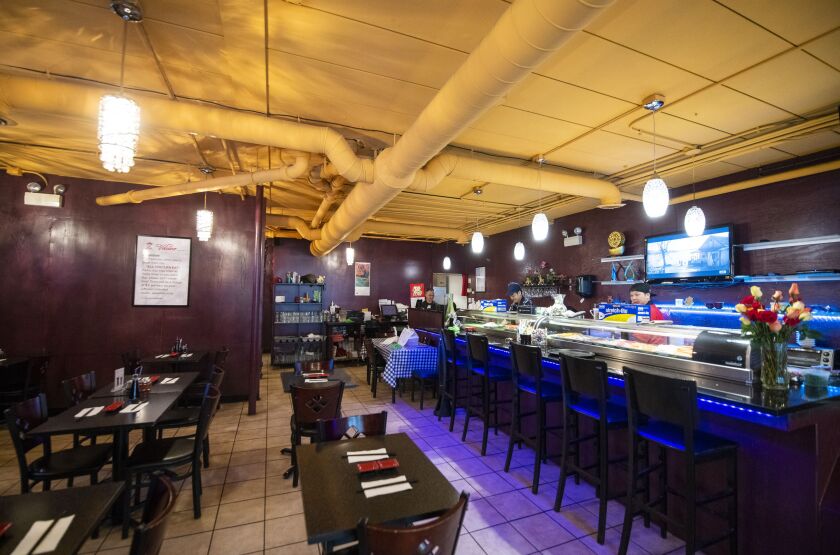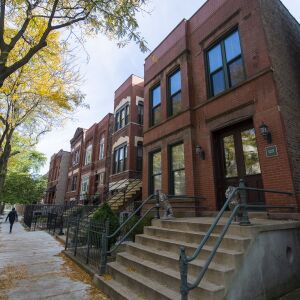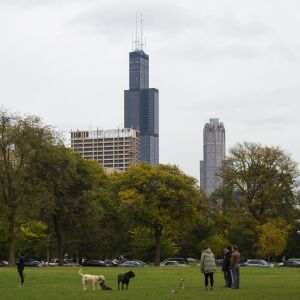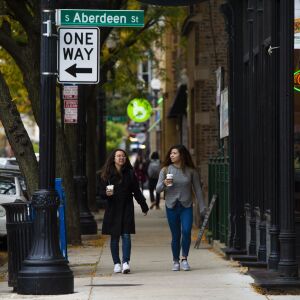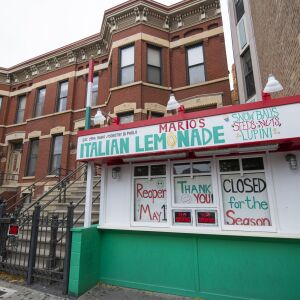Thinking about Italian-American culture makes me immediately think about delicious food. I picture a gregarious, welcoming, boisterous family around a dining table with a huge spread, of Thanksgiving-eque magnitude … except it’s every Sunday night for this family!
Silly, I know, but this fantasy does come from pervasive images of Italian-American family life that have filtered through media, movies and most likely began with the genuine penultimate importance of family in Italian culture. What’s fascinating is that Italian-American culture influenced American culture, rather than just assimilating.
What’s more American than pizza or red sauce (or gravy if you want to call it what your Italian nonna does)? Who doesn’t love baked ziti, meatballs or lasagna? The influence Italian-Americans have had on mainstream American life has been undeniably remarkable.
In general, I’d say America absorbed Italian-American culture in ways so many other immigrant cultures haven’t been able to accomplish. Just think of the great Italian-American ambassador Frank Sinatra. One-of-a-kind and truly the hallmark of Italian-American creativity and ultimate coolness. Who doesn’t love Frank?
Of course, along with the positive stereotypes there are the negative ones that come along with being immortalized in movies like “The Godfather.” Incredible movie, but the stereotype linking Italian-Americans and organized crime was pervasive for generations and still hits a big nerve for many.
Despite humble roots, incredible heights of achievement have resulted from Italian-Americans perseverance and hard work. Like many immigrant stories, it starts with Italians looking for a better way of life in America.
Chicago’s Little Italy is smaller in comparison to other Italian neighborhoods in big U.S. cities, but it’s Chicago’s oldest, continuously Italian neighborhood. The Italian-American community in Chicago and surrounding areas was spread out in large part due to the need to be in close proximity to their work. But Little Italy has remained the symbol of pride for all the smaller enclaves of Italian culture dispersed in the city and suburbs.
Little Italy is also known as University Village and slightly west is the neighborhood Tri-Taylor and the Illinois Medical District. In this story, I’m focusing on Little Italy, mostly sticking close to Taylor Street, between Ashland Avenue and Halsted Street.
History of Little Italy
The area that’s now Little Italy was initially predominantly made up of Irish, French and Italian immigrants. Dennis O’Neal from the non-profit group Connecting 4 Communities (it works with Little Italy and surround UIC neighborhoods to bring the community together through advocacy and social initiatives) said the proximity to the commercial district and downtown made the area attractive to a wide range of immigrants. With the influx of Italian immigrants growing, the neighborhood grew and stretched all the way to Western Avenue (into what is now the Tri-Taylor neighborhood).
A great resource and look at the history of the neighborhood is the wonderful book “Taylor Street: Chicago’s Little Italy” by Kathy Catrambone and Ellen Shubart. In addition to history, it’s full of archive photos of families and businesses throughout the decades.
Most of the Italian Chicagoans’ ancestors immigrated from the southern areas of Italy between 1880 and 1920. The large majority of them were unskilled workers in search of the American dream.
A significant reason why Italian immigrants were able to get settled and start their new lives with a fighting chance was the result of the work by the Hull House, established in 1889 by Jane Addams and Ellen Gates Starr.
Addams and Gates were inspired by the settlement home movement started in London in the 1880s. They worked by attracting middle-class women and men who were educated and native-born to settle and reside in poorer, urban neighborhoods and do some good while living there.
In the settlement homes, immigrants of diverse communities gathered to learn, share a meal together, socialize and acquire skills to acclimate to their new country. The museum that stands now on UIC’s campus is comprised of two of the settlement complex’s original thirteen buildings, the Hull-Home and the Residents’ Dining Hall.
The Hull House Museum’s website describes the services provided to include: “kindergarten and day care facilities for the children of working mothers; an employment bureau; an art gallery; libraries; English and citizenship classes; and theater, music and art classes. As the complex expanded to include thirteen buildings, Hull House supported more clubs and activities such as a Labor Museum, the Jane Club for single working girls, meeting places for trade union groups, and a wide array of cultural events.”
Addams was awarded the Nobel Peace Prize in 1931. Her work resulted in changes that helped to protect the most vulnerable citizens at the state and national legislative levels. Her efforts led to reforms and protections for immigrants, women and children. She also fought for labor law reform, women’s suffrage, actively supported the founding of organizations like the NAACP and ACLU.
Hull House wasn’t the only source of good works in the neighborhood.
Mother Frances Cabrini was canonized a saint in 1946. She was born in Italy and helped to form the Missionary Sisters of the Sacred Heart in November 1880 with seven young women. She arrived in Chicago in 1899 and opened the Assumption School and then Columbus Hospital. Her mission included helping immigrants, the poor and orphans.
Catrambone and Shubart write that three of the first twelve Italian churches in Chicago were in the neighborhood. These were active parishes that would assist immigrants, conduct English classes, hold festivals and sponsor athletic teams. Holy Guardian Angel Church was established in 1899, Our Lady of Pompeii in 1910 and San Callisto in 1919. Our Lady of Pompeii was built as a result of Holy Guardian Angel being overwhelmed and overcrowded by parishioners. Later, Holy Guardian would be demolished due to the Dan Ryan Expressway construction.
In the introduction of the book “Taylor Street,” a description of Little Italy emerges: “By the 20th century, the community’s duality became clear—Taylor Street was both the home to Mother Cabrini and her missionaries and hospital and the stamping ground of gangsters in the Italian Mafia, including Frank Nitti.”
The neighborhood was tight-knit and the values of hard work, family and church were the major guiding forces for Italian-American families. There was a sense of community where everyone knew each other by name.
However, architecture and infrastructure in the neighborhood were deteriorating. Little Italy was a prime candidate for urban renewal projects undertaken by the federal government after World War II.
These projects included expanding the Illinois Medical district in 1941, the Eisenhower and Dan Ryan Expressways in 1950, and public housing. The most grand and controversial project was Mayor Richard J. Daley’s decision to place the Chicago campus of the University of Illinois in Little Italy in 1961.
Many neighbors and activists mobilized to protest the destruction of the neighborhood – it would be significantly smaller and hundreds of businesses would be lost, and many homes would be demolished.
None were more active than Florence Scala. Educated at Hull House and later a volunteer there, she spearheaded the protests against the destruction of Hull House buildings and grounds that were slated for demolition to make way for the university.
Scala ran for alderman as an independent and was a vocal critic of the Chicago political machine despite being threatened and ridiculed. She (along with another prominent Hull House supporter) even went to the Supreme Court to sue the board of Hull House for accepting the city’s settlement for the seizure of land but lost.
Despite the project destroying hundreds of businesses and displacing thousands of residents, Little Italy managed to persevere. The university and medical district brought in students, jobs and young professionals. Following suit were a diverse array of businesses to meet new needs of the growing neighborhood.
Along with the new, there’s still the old – a surprising number of independent, family-run Italian American restaurants that have been successful for generations winning over newcomers and welcoming back former neighbors looking for the Little Italy of yesteryear.
If there are any doubts about Italian-American pride running deep just look at the turnout for the Columbus Day parade. The Italian-Americans come out in droves from all over Chicagoland to participate – going strong since 1868!
If you’re looking to learn more about Italian-Americans and Chicago, check out the documentary “And They Came to Chicago: The Italian American Legacy” and the website. The documentary is narrated by proud Italian-American and Chicagoan Joe Mantegna.
In Stone Park, Illinois, check out the organization Casa Italia Chicago. Its mission statement is the preservation and promotion of Italian-American Culture in Chicagoland. Casa Italia Chicago has a cultural center museum and a community center as well.
There’s also Chicago’s Italian-American networking organization called the Chicagoland Italian American Professionals. Members promote Italian business, culture, language and lifestyle.
Where to eat in Little Italy
Ok, there’s a lot more to Little Italy than Italian food. There’s a plethora of Asian, some Mexican, some Middle Eastern and of course chains more suited to university students’ budgets.
I decided to stick with the Italian spots. While learning about the neighborhood’s history, the theme that revealed itself to me was its overwhelming resiliency. It’s survived- much like the gutsy immigrants who started it all. So I felt it was important to feature as many old-school, independent and family restaurants as I could.
It’s incredible for a restaurant to survive its first year, let alone hit its 10th or 20th anniversary. But what makes a restaurant a neighborhood treasure is when it survives decades, passing through the hands of multi-generations. Its mostly hard, thankless work and many following generations would rather not have the headache of continuing the family legacy, so it’s incredible to find so many spots in Little Italy where that’s not the case.
Scafuri Bakery’s history dates back to 1904. Luigi and Carmella Scafuri opened the bakery after immigrating to Chicago in 1901 from their native Calabria, Italy. After Luigi passed in 1955, his daughter Annette Mategrano (with husband Pasquale) continued the family’s legacy until closing the bakery in 2007. Annette’s great-niece Michelle reopened the bakery in May 2013. You can find traditional Italian cookies, filled to order canolli, other sweets like donuts and brownies. They also have a cafe menu with egg sandwiches, quiche and lunch items – even selling pizza by the slice.
After fighting in World War I, Aniello Fontano opened Carm’s grocery store (with wife Gilda) that would later morph into two businesses across the street from one another on the corner of Carpenter and Polk Streets.
Since 1929, the storefront has been a staple in Little Italy for its Italian groceries and the lemon-flavored Italian ice sold in the summers. In the 1960s, Carm’s turned into a restaurant that served up hot dogs (Chicago-style all the way chili and cheese dogs), Italian beef sandwiches and subs. They even have tacos and burritos. Also, in the 1960s Fontano’s Subs (now expanded into a chain) opened across the street (initially assuming the grocery operations) and serves up Italian subs, sausage and meatball subs. Both establishments are run by second and third generations of the Fontano family.
Al’s #1 Italian Beef was established in 1938 by Al Ferrari and his sister and brother-in-law, Frances, and Chris Pacelli, Sr. The recipe for the beef was developed in Al’s kitchen during the time of the Depression, as a result of necessity. During those tough days everything had to be stretched, including the trimmings of more expensive cuts of meat for celebrations and weddings. The meat was expertly trimmed, cooked until tender, sliced paper thin (so you could see through it), served on fresh bread and dipped in its braising and cooking juices to maximize flavor. The family sold the sandwiches at a food stand and delivered them to local businesses until opening the location on Taylor Street. The beef at the Taylor Street location is still made in-house along with giardiniera. Just make sure you eat it in “the stance” standing at the counter to make sure you’re not wearing the sandwich on your shirt after you leave!
Tufano’s Vernon Park Tap was established in 1930 and is still run by the same family. Current proprietor Joey DiBuono is the grandson of the founders, Joseph DiBuono and wife Teresa Tufano. Joey took the helm of the restaurant in 1980, but credits the women in his life (his aunts, mother and sisters) for keeping him on track and for the success of the family establishment. Smart man! His grandmother Teresa worked in the restaurant until she was 90 years old. He’s now running the restaurant with his daughter Darci. In 2008, Tufano’s was the recipient of the James Beard Award for America’s Classics category. Joey and his wife Tracey Tarantino are cornerstones in the Italian community.
Ok, so this next stop isn’t Italian, but it’s been around a long time and is the go-to spot for breakfast. Sweet Maple Cafe has incredible biscuits and one of the best breakfasts in town. Laurene Hynson opened a breakfast and lunch cafe in 1999. A Chicago native, she left to study economics at Stanford and then returned to Chicago with her husband to raise her family. Looking for a creative outlet but one that would still make it possible for her to pick up her two young children from school every day, she gathered family recipes to create her menu for a breakfast spot. If it was only breakfast and lunch she’d be done in the afternoon in time to make it for pick-up. She had no clue that her restaurant would be such a success! So much so that often there is a line out the door.
The original Rosebud was founded in Little Italy on Taylor Street by Alex Dana. A bustling restaurant filled with handsome touches of wood carvings, old school glamor and plenty of photos of celebrity patrons line the walls like Frank Sinatra (he had his own table of course), Tony Bennett and recently Tom Hanks who declared the baked ziti the best he’s ever had!
Pompei was established in 1909 by Luigi and Carmella Davino. Originally named after its proximity to Our Lady of Pompeii Church. It’s still run by the same family and the commitment to fresh ingredients and traditions remain. The menu has expanded far beyond the bread and pizza that started the business and now includes everything from salads, soups, pastas and sandwiches.
Since 1948, Conte Di Savoia in Little Italy has been serving up incredible sandwiches and salads. It’s known for making Italian sausages and buffalo mozzarella. Owner Michael Dicosola purchased the business after working for the original owners and has kept the shop going with the help of his wife and sons. They import many fine Italian cheeses, sweets, cookies, olive oil and wine directly from Italy. Besides sandwiches and a variety of freshly made salads, you can pick up ready made pastas and red sauce to go from the cooler or freezer.
Other dining locations to check out include Tuscany’s on Taylor, opened in 1990 by hospitality and restaurant leader Phil Stefani. There’s also Davanti Enoteca, owned by The Francesca’s Restaurant Group. They also have Francesca’s on Taylor.
There are two additional old school spots I’d like to mention. They don’t have websites. The first is the Patio Restaurant, 1503 W. Taylor Street, which serves up Italian beef sandwiches and Chicago style hot dogs. This is a fast food spot that was established in 1948. The other is Little Joe’s Circle Lounge, at 1041 W. Taylor Street, which is a local watering hole that has been pouring beers and shots since 1946.
Things to do in Little Italy
The National American Sports Hall of Fame honors all Italian-American Athletes from a wide variety of professional and olympic arenas. The hall has more than 200 Italian-Americans who are honored as inductees including Vince Lombardi, Rocky Marciano, Tommy Lasorda and Mario Andretti.
Across the street from the Hall of Fame is the Joe DiMaggio plaza. Constructed in 1998, DiMaggio came to Chicago for the statue’s dedication in May 1999.
Jane Addams Hull-House Museum preserves and celebrates the original Hull House which was indispensable to Italian immigrants, as discussed earlier in the history of section. Jane Addams was the first American woman to receive the Nobel Peace Prize for her vision and work through the historic settlement house programs that strengthened democracy and immigrants’ rights.
The Shrine of Our Lady of Pompeii dates back to 1911 as an official Italian national parish, was built in 1923 and is a cornerstone in Little Italy’s history and continues to celebrate Italian heritage. In 1994, Cardinal Bernardin proclaimed Our Lady of Pompeii a shrine. It’s a breathtaking church in the Roman Revival style, with stained glass and arches, where sacraments and mass are offered throughout the year.
Notre Dame of Chicago is known as “The Parish with Heart in the Heart of the City” and was founded in 1864, by French-speaking immigrants. Built by French Canadian architect Gregoire Vigeant, it has gone through five major renovations throughout the years. This Roman Catholic Church is one of the few French landmarks remaining in Chicago and was added to the National Register Historic Places in 1979. It’s not Italian but worth seeing!
Arrigo Park was formerly Vernon Park. Renamed Arrigo Park in honor of Victor Arrigo, an Italian-American community leader and state representative from 1966 to 1973. Arrigo was key in bringing the Christopher Columbus statue to the park in 1966 – which had first been unveiled at the 1893 World’s Fair.
What residents say about Little Italy
Mario DiPaola a longtime Little Italy resident and the owner of Mario’s Italian Lemonade, shared his reflections on the neighborhood.
“I could live anywhere in the city, but I love Taylor Street — can’t help but to look down the street and see how it is now and what it used to be. Most of the people have left, but I’m still here because I love it. My neighbors are students, but I can relate to them even though I’m in my 70s. When I was a kid, there were seven or eight grocery stores on this street but now there aren’t any – it’s kind of sad, but things are changing.
“My fondest memories are of Sheridan Park. Even though it’s a new park, I remember the old park. It’s the camaraderie — we’d play football, baseball, basketball and 16-inch softball there and played on our own without any parents. We played on dirt and grass, no artificial turf. My dad came here from Italy in 1939 and never left and neither have I.”
One last thing
I had no idea that Little Italy had gone through so much! The highways, UIC campus and the growth of the Illinois Medical District came with great benefits but also required much sacrifice from the residents of Little Italy. The values of the first Italian-American immigrants helped them persevere, just as Little Italy has, and the foundation they laid on Taylor Street is still visible and palpable.
It’s worth checking out the “old-school” spots because they’ve thrived and survived with such charm and character. And most of these restaurants and shops have proprietors with a story to tell and are friendly enough to talk awhile if you just ask or show interest. So get there – and soak it up when you can.













